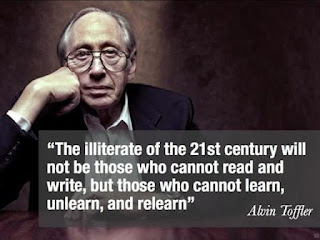The Rising Age of Data Analysis: From Insight to Intelligence
Over the past decade, data has evolved from being a byproduct of digital operations to becoming the very foundation of decision-making. What was once a practice of “looking back” to understand performance has now become a strategic discipline that shapes what comes next. We’re living in the rising age of data analysis, and the shift isn’t just technological—it’s cultural, organizational, and deeply transformative.
The Changing Landscape: From Reports to Real-Time Intelligence
Not long ago, organizations relied on static reports and dashboards to make quarterly decisions. Today, data analysis is happening in real-time, embedded in every workflow, product, and service. The velocity, variety, and volume of data have exploded, and so have the expectations from business leaders.
This shift is visible in the Gartner Magic Quadrant for Analytics and Business Intelligence Platforms, where we’ve seen a steady migration of players toward AI-infused solutions. Platforms like Microsoft Power BI, Tableau (Salesforce), Qlik, and newer entrants in augmented analytics are reshaping how organizations turn raw data into actionable insight. The competition has moved beyond visualization—it's now about prediction, automation, and storytelling.
The quadrant is also widening its focus from traditional analytics to Data Engineering, AI-driven analytics, and governance integration, marking a new wave where data is treated as an enterprise asset—not a department-specific function.
The Role of Data in the AI Era
Artificial Intelligence thrives on data. Without structured, high-quality, and well-governed data pipelines, even the most sophisticated AI models are rendered ineffective. As AI adoption scales, data teams are rethinking architecture—from siloed warehouses to data lakes and lakehouses, ensuring governance and security are not afterthoughts.
AI isn’t replacing data analysis; it’s enhancing it. Automation is now handling repetitive cleaning and transformation tasks, freeing up analysts and data engineers to focus on higher-value activities like modeling, storytelling, and driving business outcomes.
This shift also means data literacy is becoming as essential as digital literacy once was. Every professional—from business users to project managers—must understand how to interpret data outputs and question insights effectively.
The Graph is Moving Upwards: Demand and Opportunity
The growth curve for data roles continues to rise sharply. According to recent industry insights:
-
The global data analytics market is expected to surpass $350 billion by 2030, growing at over 13% CAGR.
-
Data engineering roles have seen a 35% year-on-year growth, outpacing traditional analyst positions, due to the surge in AI and big data infrastructure needs.
-
The demand for data governance professionals has nearly doubled since 2022, as organizations grapple with compliance, privacy, and quality frameworks.
-
Gartner predicts that by 2026, 80% of organizations will establish data governance as a formal discipline, integrated with their AI and analytics strategy.
These statistics highlight one truth: data is no longer a support function—it’s a strategic differentiator.
Who Are the Leaders, Challengers, and Innovators?
In the current analytics ecosystem:
-
Leaders such as Microsoft, Google, and Salesforce are consolidating end-to-end ecosystems—integrating analytics, AI, and governance seamlessly.
-
Challengers like Amazon Web Services and IBM are expanding horizontally into new data governance and AI orchestration layers.
-
Visionaries and Innovators, including Snowflake, Databricks, and ThoughtSpot, are redefining architectures—prioritizing scalability, real-time insights, and user-friendly interfaces that empower non-technical users.
It’s not just about who owns the best technology—it’s about who can make data accessible, explainable, and ethical.
The Data Governance Imperative: Where Analysts and Project Managers Converge
For project managers stepping into the data governance arena, the role extends far beyond managing tasks and timelines. It’s about orchestrating people, process, and platforms to ensure data consistency, compliance, and usability.
Key skills that make a difference include:
-
Understanding data lifecycle and metadata management
-
Facilitating collaboration between data engineering, compliance, and business teams
-
Implementing frameworks like DAMA-DMBOK or DCAM
-
Ensuring projects align with both business value and ethical data use
A data governance project is as much about change management as it is about technology.
The Rise of Data Engineering: The New Wave
While analytics tells the story, data engineering builds the stage. The surge in AI, ML, and real-time analytics has created massive demand for robust data pipelines, scalable cloud platforms, and efficient ETL (Extract, Transform, Load) architectures.
Data engineers today are not just coders—they are architects of intelligence. They build the highways where raw data travels securely and swiftly to feed predictive models and business insights. This makes data engineering the next wave—a perfect confluence of development, analytics, and governance.
In Closing: From Data-Driven to Data-Confident
The age of data analysis is evolving into an age of data confidence—where organizations don’t just collect and report but trust, act, and innovate with data.
For professionals stepping into this field—whether as analysts, engineers, or project managers—the future is bright, demanding, and deeply rewarding. The opportunities lie not just in understanding the data, but in understanding how it drives purpose.



Comments
Post a Comment